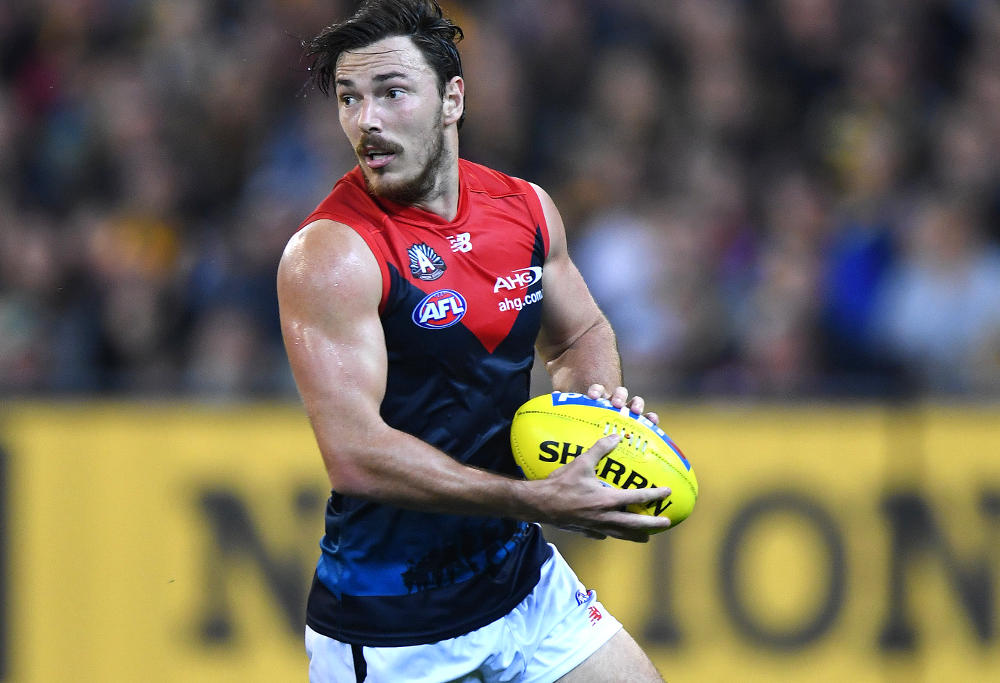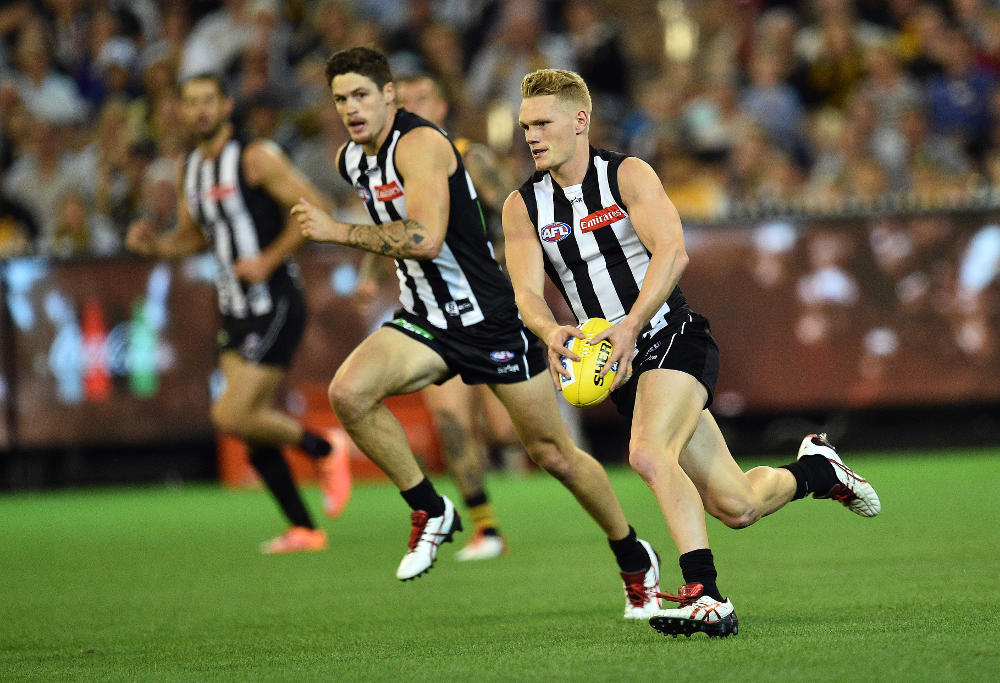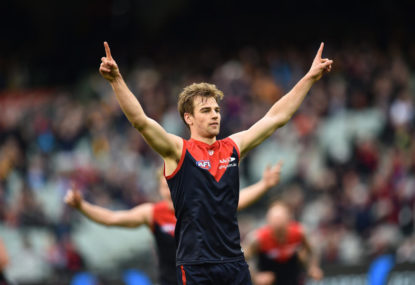Tenth-placed Melbourne host eleventh-placed Collingwood in the annual Queen’s Birthday game at the MCG today, with the winner certain to finish Round 12 inside the top eight.
The Dees and the Pies have a couple of things in common, particularly when it comes to the ability of their respective midfields to better their opposition.
Both have good numbers when it comes to winning the hard stuff. Melbourne average 3.4 more clearances and 6.8 more contested possessions than their opponents this year, Collingwood 4.6 and 6.5 in those same categories.
Both convert that into a positive inside 50 differential, but Collingwood do it better, averaging 8.7 more inside 50s than their opponents this year. Melbourne still average a healthy +5.4 inside 50s per game.
The numbers suggest this comes from Collingwood playing a more direct, higher-risk game with their ball movement, one that results in an average of three more clangers per game than their opponents – while Melbourne about break even there (-0.1).
Melbourne do a little better in the marks-inside-50 stakes, averaging +2.1 on their opponents compared to Collingwood’s +1.9, showing the value of taking the more considered approach.
The biggest difference between the two midfields however comes in terms of tackling pressure. Although both sides get more of the ball than their opponents, Melbourne average five more tackles than their opponents, while Collingwood average 5.5 less. The Dees lay about 1.4 more tackles per 100 opposition disposals than Collingwood.
Weighing it up, the battle of the midfields is close to even, though both have different strengths. The Magpies are better at willing the ball forward – albeit not always with precision – while Melbourne work harder when the opposition has the ball, and are classier going forward.

(AAP Image/Julian Smith)
However while these two sides may come close to breaking even in the midfield, it’s at the respective ends of the ground where there is a significant difference.
Melbourne essentially are squaring or slightly winning the battle between offence and defence.
They clear their opponent’s forward 50 at a rate of 67 per cent, and allow their opponents to do the same to them at a rate of 66 per cent. They record 1.78 points per inside 50, and concede 1.76.
Basically, their forward and back sixes are neither a strength nor a weakness – if they win in the middle they will generally win the game.
Collingwood, on the other hand, are very unbalanced here, and not in the good way.
They clear their opponent’s forward zone 64 per cent of the time, but allow their own to be cleared 71.5 per cent of the time – a -7.5 gap, as opposed to Melbourne’s +1.
Even when they are able to get scoring shots off, their accuracy kills them. 51.5 per cent of their scoring shots are goals, compared to Melbourne’s 62.3 per cent.
As a result they average only 1.56 points per inside 50 while conceding 1.8, and only score 21.7 points per 100 disposals, while conceding 23.28.
Of course, only so much can be gleaned from season averages, and for both of these sides, the personnel available – or not available – is crucial at the moment.
Melbourne are missing arguably their two most important players structurally in Jesse Hogan and Max Gawn. Collingwood are missing two of their most dynamic and creative players in Jamie Elliott and Daniel Wells.
The numbers suggest the Demons have dealt much better with those key absences than Collingwood have. Although they’d no doubt be a better side with Gawn and Hogan, their points differential with both players out is on part with their season average.
Not so Collingwood. Their season average points differential is +2 on their opponents, but in games where neither Elliott nor Wells take to the field, it is -14.
At the risk of oversimplifying things, I would say that Collingwood will need to better Melbourne’s midfield output by about 25 per cent in order to account for the combination of their deficiencies at either end of the ground and the absences of Elliott and Wells – do that, and they should be about 50/50 to win.

(AAP Image/Julian Smith)
The path to victory for Melbourne then is simple – prevent Collingwood from dominating in the midfield, and take advantage of their forward-line struggles.
Put tight clamps on Scott Pendlebury and Adam Treloar, use Michael Hibberd’s rebounding abiltiy to great effect, and keep Alex Fasolo – the player most likely to provide some forward-line dynamism for Collingwood – in close check.
For Collingwood, it’s a fair bit harder. Unless the forward line and defence miraculously improve overnight – and with key personnel missing it seems especially unlikely – they’ve just got to hammer Melbourne as hard as they can in the midfield and hope that sheer force of will and weight of forward entries delivers a win.
The Pies can hold out hope that Melbourne coming into this match off the bye allows them to get the jump on the Demons.
That said, they’ve got the bye themselves next week and it’s not uncommon for young sides to put in poor efforts when there’s a week off in site.
Play this match on endless repeat and I’d say Melbourne win roughly four out of five times, so I’ll tip them to get the job done, and by a margin of four goals.
That’s my Queen’s Birthday Forecast! What’s yours?































































































